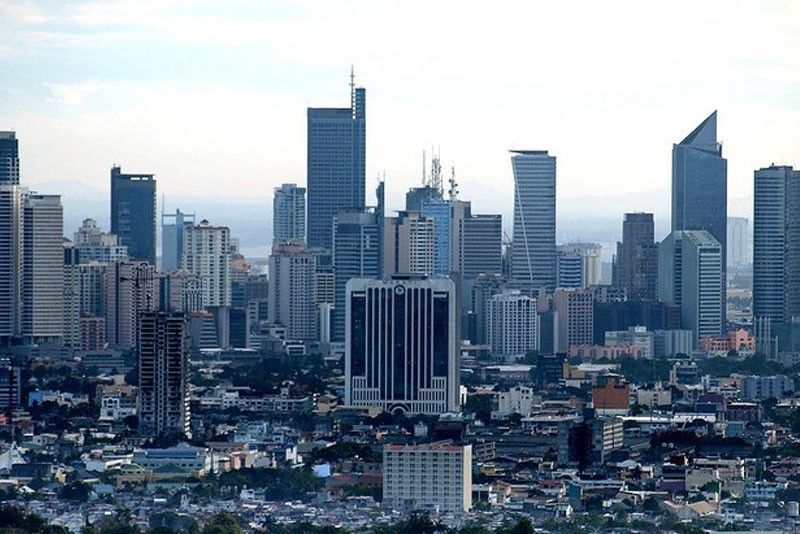Philippines growth easing to 6.4% this year – ADB

MANILA, Philippines - The Asian Development Bank (ADB) expects economic growth in the Philippines to moderate to 6.4 percent in 2017 as the rise in commodity prices tempers consumer spending.
In its Asian Development Outlook 2017 report, the multilateral development bank said it is retaining its domestic growth expectation for 2017 but foresees domestic economic output to recover to 6.6 percent growth in 2018 as the government ramps up infrastructure spending.
“Strong economic growth in 2016 is expected to carry on in 2017 and 2018, thanks to continuous acceleration of investment and consumption,” said ADB principal country specialist Joven Balbosa in a briefing yesterday.
He noted, however, that growth in 2017 is expected to moderate as a natural course because it is coming from a high base – a 6.9 percent growth last year – and as a reaction to macroeconomic headwinds such as rising inflation due to surging global oil prices and the US interest rate hike that can affect certain trade and investment policies in the country.
“Rising commodity prices will affect domestic demand,” he said.
He noted the hike in US interest rates in December will prompt similar rate adjustments by the Bangko Sentral ng Pilipinas within the short term that will also dampen domestic consumption.
The Philippines’ strong economic economic perfromance in 2016 was largely due to election-related spending that boosted private consumption. The report said the ratio of fixed investment to gross domestic product (GDP) reached 23.8 percent last year, the highest in a decade.
Private consumption, which comprised 70 percent of GDP, rose 6.9 percent in 2016 due to higher employment and steady inflows of remittances that reached $29.7 billion.
Public spending also rose 8.3 percent with increased expenditure on social programs including the conditional cash transfers.
Services expanded 7.5 percent and industry registered an eight percent growth last year.
Consumer inflation remain modest, averaging 1.8 percent last year within the two to four percent target of the central bank.
ADB expects average inflation rate to be higher at 3.5 percent this year and 3.7 percent in 2018 but still within the central bank’s target.
Aekapol Chongvilaivan, economist for the Philippine country office, said economic dampeners affecting the Philippines this year are more external than internal.
“For the Philippines, the risks do not come from within the Philippines but outside of the Philippines,” he said.
“We forecast consumption growth will be very robust but will moderate from last year. And the reason is more of external factors like the weakening of the peso, increase in oil prices, “ he added, noting both developments translate to rising inflation which undermines consumer confidence.
The possible shift in the trade and tax policies of industrialized economies also pose a threat to the country’s growth. Among these are the possible trade and investment protectionist policies that may impact the revenues of business process outsourcing in the country and remittances by OFWs.
Slow recovery in the country’s major trade partners such as Japan and European Union would also put a strain on trade and investment.
“Despite the risks, vulnerability to external shocks are cushioned by the country’s solid macroeconomic fundamentals,” said Balbosa.
He said, however, the growth forecasts for 2017 and 2018 are “very upbeat” and must be viewed with optimism.
The ADB economist noted the Philippines is still in a “sweet spot for economic growth” provided the strategies under the Philippine Development Plan (PDP) 2017-2022 are implemented “effectively” and infrastructure buildup is sustained.
The PDP aims to bring down the poverty rate in the country from 21.6 percent in 2015 to 14 percent by 2022 by targeting poverty in lagging regions.
ADB also urged the Philippines to complete pipelined infrastructure projects on time to sustain the growth momentum.
Chongvilaivan said the country’s infrastructure push will “set the center stage for growth in the Philippines.”
“The country must maximize ODA (official development assistance) from China, Japan and Korea,” he said.
He said the projections were made assuming 70 to 80 percent of the pipelined projects are completed on time.
On a regional level, growth in Asia and the Pacific region is expected to reach 5.7 percent in 2017 and 2018, a slight deceleration from the 5.8 percent in 2016 as growth in China cases.
Arief Ramayandi, senior economist of ADB, said productivity growth is key to lifting up income in the region. This, he said, should be accompanied by innovation which in turn requires investment in human capital to close the skills gaps with high-income economies.
The region also needs to increase investments in “more advanced infrastructure.”
“We don’t see much risks coming from the region. Most of the risks we see come from policy uncertainties in developed economies,” he said.
- Latest
- Trending
























